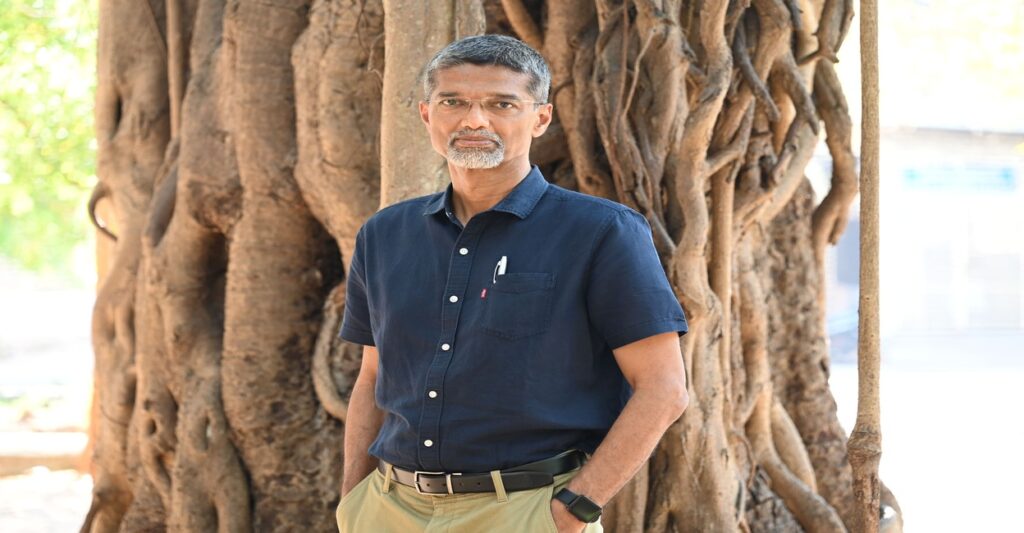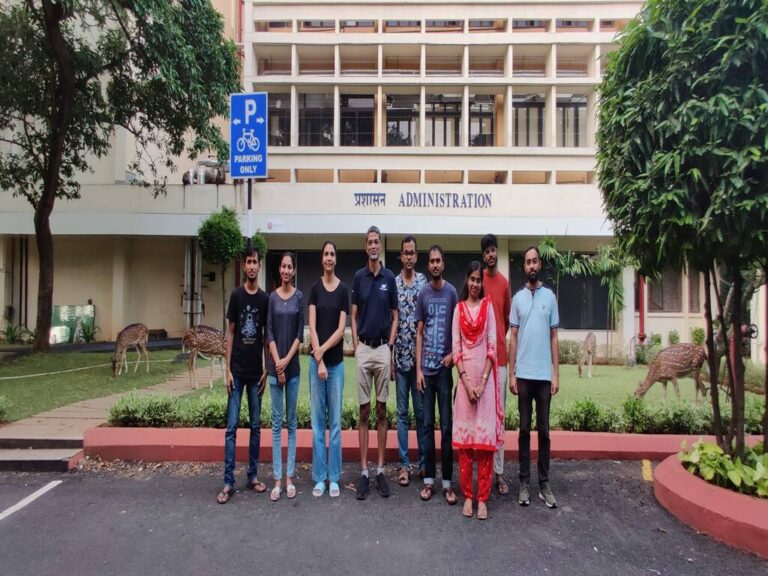
Prof. P. B. Sunil Kumar
Department of Physics
Complex Fluids and
Biological Physics Laboratory
&
Centre of Excellence in
Soft and Biological Matter (CSBM) @IIT Madras

From left to right: Deepak Kumar, Aathira Murali, Monika Chaudhary, P. B. Sunil Kumar, Anubrata Saha, Ritu Raj, Siji S. Saju, Akash Singh, Shubhendu Shekhar Khali
At Complex Fluids and Biological Physics group the researchers are interested in understanding the structure and dynamics of soft and biological materials through theoretical modelling and computer simulations. Primary interest of the group is in non-equilibrium steady state properties of these materials.
As a part of CSBM our work is focused on understanding of the chromatin organization, shapes of biological membranes and cytoskeletal organization. We believe these studies are of importance in understanding the physics of structure and organization of biological systems. We have proposed a novel polymer model for chromatin that include the effects of structure modifying chemical reactions. We have developed a variety of powerful simulation techniques to study the dynamics of multi-component fluid membranes and membranes with protein like inclusions. We are also interested in the interplay of cytoskeleton tension and membrane elasticity.
All the above was possible due to incredible hard work put in by the present and past members of the lab (LinkedIn) and other distinguished collaborators (LinkedIn ).





